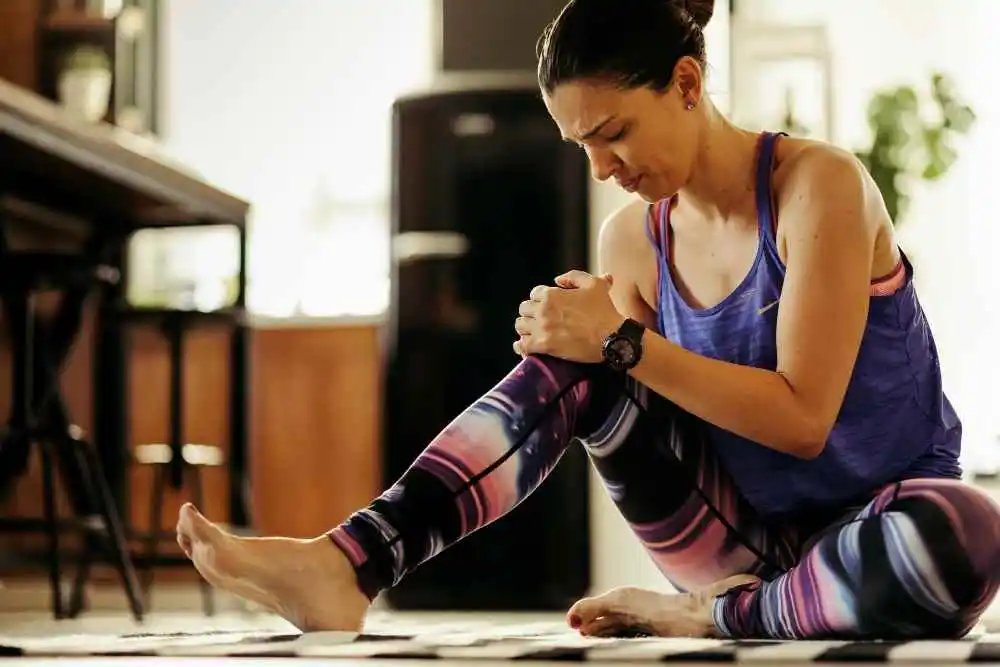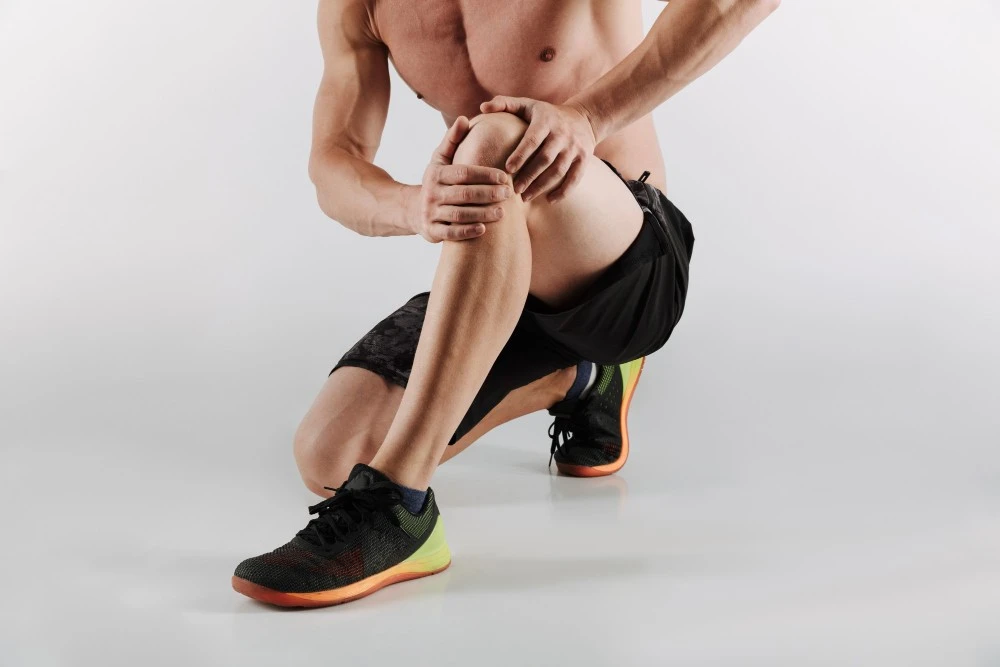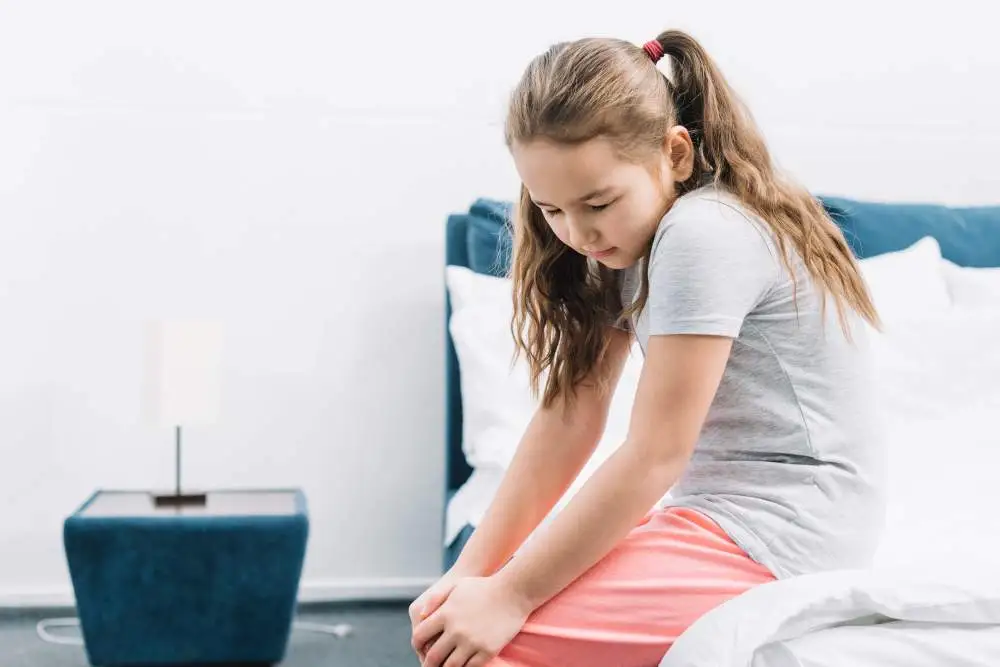Have you ever experienced a sharp needle like pain in knee when kneeling? Your situation isn’t unique. Understanding this strange feeling might help you find relief. It may indicate underlying difficulties.

The Senses Explained
The sharp, prickly pain you feel when you’re kneeling is often called a “catch” or a “pinch.” Pressure on structures inside the knee joint, like the meniscus, tendons, or bursae, is usually what causes this feeling. Located between the thighbone (femur) and shinbone (tibia), the menisci are crescent-shaped pieces of cartilage that help absorb shock. These structures can get compressed when you bend, which can cause the sharp pain you’re feeling.
Common Reasons
Multiple things can cause sharp needle like pain in knee when kneeling when you’re standing. For example, some of the most popular reasons are
- Tears in the menisci: If you have a tear in the menisci, the broken cartilage can hurt very badly when you bend.
- It can be very painful to kneel if your bursae become inflamed. Bursae are fluid-filled sacs that support your knee joint.
- When you kneel, sharp pain can be caused by damage to the muscles that hold the knee joint together.
- If you have osteoarthritis, the cartilage in your knee joint breaks down over time. This can make kneeling very painful.

How to Diagnose and Treat
Your doctor will give you a full physical check and may order imaging tests like X-rays, MRIs, or ultrasounds to find out what is causing the sharp, needle-like pain when you sit. Your healthcare provider will suggest the best way to treat you based on the data.
When kneeling, sharp, needle-like pain is common, these are some common ways to treat it:
- Rest: Staying away from things that hurt can help reduce swelling and speed up the healing process.
- Ice: Putting ice on the hurt area can help ease the pain and swelling.
- Pain killers you can buy over the counter, like ibuprofen or acetaminophen, can help with pain and swelling.
- Physical therapy: Building up the muscles around the knee can help support it and ease the pain.
- shots: Corticosteroid shots can help ease pain and inflammation.
- Surgery: Sometimes, broken parts of the knee joint need to be fixed through surgery.
Safety First
If you want to avoid sharp, needle-like pain when you’re standing, read these tips:
- Keep your weight at a healthy level. Being overweight can put extra stress on the knee joint.
- Build up the muscles in your legs. Having strong leg muscles can help support your knees and ease pain.
- Put on the right shoes: Shoes that give your feet the right amount of support and comfort can help your knees feel better.
- Use knee pads. When you kneel, knee pads can help protect your knee joint.
Sharp needle like pain in knee when kneeling treatment
When kneeling, does your knee hurt like a needle? It might be painful and worrying, but there are several ways to address it. Our post will address the reasons of this knee discomfort and some simple, effective treatments to help you feel better.
Getting to Know the Pain:
There are several possible reasons why knee pain that feels like a sharp needle could happen when you’re crouching. It might be because of something like patellofemoral pain syndrome, torn ligament, bursa, or so on. These conditions can make the knee hurt and swell, especially when pressure is put on it while doing things like bending.
Treatment Options:
- Rest and Ice: If you have this kind of knee pain, you should rest your knee and put ice on it to help reduce any swelling. This easy method can help right away and speed up the mending process.
- Physical therapy: Doing certain routines and moves with the help of a physical therapist can help strengthen the muscles around the knee and make them more flexible, which may make bending less painful.
- Supportive Footwear: Wearing shoes that are supportive and soft can help spread the pressure more evenly across your feet and knees, which may make standing less painful.
- Knee Braces: A knee brace or support band can give you more stability and compression, which may help ease the sharp pain you feel when you’re crouching.
- Nonsteroidal anti-inflammatory drugs (NSAIDs), like ibuprofen or naproxen, can be bought over the counter to help with pain and reduce swelling. It is important to follow the directions on the bottle and talk to a doctor if you have any worries.
- Managing your weight: If you are overweight, losing a few pounds can help relieve pressure on your knees, which may make crouching less painful.
Friendly Advice:
You should pay attention to your body and not try to push through pain. Seek advice from a medical professional if your knee pain lasts for a long time or gets worse over time. They can do a full review, which may include imaging tests, to find out exactly what is causing your knee pain and make a treatment plan just for you.

Sharp needle like pain in knee cap
Every age group suffers from knee discomfort. Injury, overuse, and medical issues may cause it. A strong needle-like knee cap discomfort may be quite unpleasant. Causes, symptoms, and treatments for this knee discomfort are covered in this article.
Causes of Sharp Needle-Like Pain in Knee Cap
Sharp needle like pain in knee cap could be caused by a number of things. Here are some of the most popular reasons:
- The patella (knee cap) doesn’t move properly over the femur (thigh bone), which can lead to patellofemoral pain syndrome. This could make the area around the knee cap hurt and uncomfortable.
- Knee osteomalacia Patella: This is a disease that happens when the cartilage on the bottom of the kneecap gets worn down or broken. This can make the area around the knee cap hurt, especially when the knee is bent or straightened.
- Osteoarthritis is a disease of the joints that gets worse over time. It can happen in any joint, not just the knee. It happens when the cartilage that protects the joints goes away over time, making the joints painful and stiff.
- Damage to the Knee: A sprain, strain, or tear can cause sharp, needle-like pain in the area of the knee cap.
Symptoms of Sharp Needle-Like Pain in Knee Cap
Different things can cause Sharp needle like pain in knee cap, which can lead to different symptoms. Here are some common symptoms:
- When you bend or raise your knee, the area around the knee cap may hurt or feel uncomfortable.
- Swelling or soreness in the knee cap area.
- Leg pain or stiffness that makes it hard to move the knee.
- When you move your knee, you might hear clicking or popping.
Treatment Options for Sharp Needle-Like Pain in Knee Cap
What you can do to treat Sharp needle like pain in knee cap will depend on what’s causing it. The following are some popular types of treatment:
- Rest and Ice: Putting the knee to rest and putting ice on it can help ease the pain and swelling.
- Physiotherapy: Physiotherapy can help improve range of motion and strengthen the muscles around the knee.
- Taken medicines: Pain killers you can buy over the counter, like ibuprofen or acetaminophen, can help ease pain and swelling.
- Braces for the Knee: A knee brace can help support the knee and ease pain and stiffness.
- Surgery: Sometimes, broken cartilage or other parts of the knee need to be fixed or replaced through surgery.
Preventing Sharp Needle-Like Pain in Knee Cap
If you want to avoid Sharp needle like pain in knee cap, here are some things you can do:
- Trying to keep a good weight: Having too much weight can put extra stress on the knees, making them more likely to get hurt or hurt.
- Putting on the right shoes: Knee problems are less likely to happen if you wear shoes with enough support and padding.
- Before you work out, stretch and warm up: Before you work out, stretching and warming up can help keep you from getting hurt or in pain.
- Avoiding high-impact activities: Activities with a lot of impact, like running or jumping, can put extra stress on the knees and make them more likely to hurt or hurt themselves.
When Should I See a Doctor For Knee Cap Pain
It hurts like a needle in the top of your knee. You should see a doctor if:
- Your knee joint is bent or twisted.
- When the accident happened, there was a “popping” sound.
- Your knee is weak.
- Your knee pain is the result of a hard hit.
- A lot of redness, swelling, pain, and warmth are happening around the joint.
- You are sick because you have a fever or other signs.
- The pain in your knee has been going on for more than 48 hours or hasn’t gone away after three weeks.
- You can’t do normal things or sleep because of your knee pain.
- The area around the joint is red or swollen.
- For more than 24 hours, you can’t move as freely as you used to.
In Conclusion
Finally, sharp, needle-like pain in the knee cap can be a scary and annoying sign of a number of conditions, including patellofemoral pain syndrome, chondromalacia patella, osteoarthritis, or knee accidents. To make an educated choice about getting the right medical care, you need to know about the signs and possible reasons.
FAQS BY sharp needle like pain in knee when kneeling
When should I see a doctor for knee cap pain?
If you have significant swelling, redness, tenderness, and warmth around the knee, deformity or instability in the knee joint, inability to bear weight, a “popping” sound at the time of injury, pain that lasts more than 48 hours or does not improve within three weeks, pain that affects your daily activities or sleep, or reduces range of motion, see a doctor.
How is sharp needle-like pain in the knee cap diagnosed?
To determine the reason of the discomfort, a doctor may request X-rays, MRIs, or CT scans.
What are the treatment options for sharp needle-like pain in the knee cap?
Sharp needle-like knee cap pain therapy depends on the reason. Rest, ice, physical therapy, medicines, knee braces, and surgery are popular treatments.